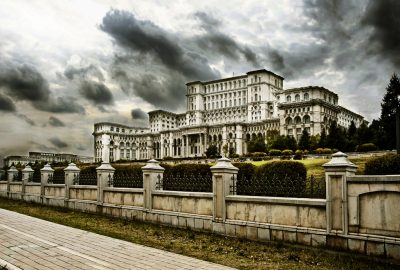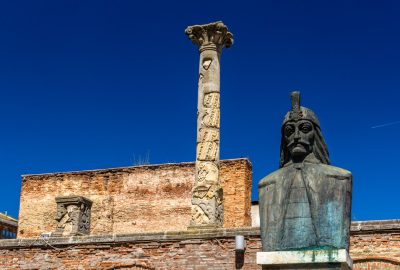Nicolae Ceaușescu, Count Dracula, Transylvania, gloom, misery and garlic is what most people think of when Romania comes to mind. But what do we really know about this country and its capital Bucharest? The country always possessed a unique place in Eastern Europe and especially the Romanian people think they are very different from the surrounding countries. They do not even consider themselves as Balkan people. And at least as language is concerned they are very correct. Where almost all countries in the region (except for Hungary) are considered to be Slavic, Romanians can connect easier with Italians, French et cetera. After the territory of the current Romania was part of the Roman Empire for a long time it faced many wars and conflicts, not in the last place invasions by Ottomans and other neighbouring countries. But despite the turbulent times, the country and especially Bucharest would profit from centuries of prosperity and development.
Bucharest, Bucuresti in Romanian, became Vlad Tepes’ seat of power in 1459 and would transform into one of the wealthiest European cities. In the beginning of the last century when the Europeans become more mobile It became a popular travel destination for the rich and famous. There were traditionally strong ties with France and the local aristocrats speak even French amongst each other. A lot of architecture including a smaller version of the Arc de Triomphe was modelled after French examples, and the city was even called the “Paris of East”.

Palace of the Parliament: the overwhelmingly large legacy of Nicolae Ceaușescu in the centre of Bucharest, after the December 1989 revolution it became also commonly known as Casa Poporului which translates as The People's House
That is until it got hit by devastating bombings during World War 2 and two earthquakes, which massacred the population and flattened the city like an ice cream sandwich. Nicolae Ceaușescu, the famous mad dictator and his wife Elena took over and started rebuilding the Romanian capital in a true communist fashion. Their megalomania was beyond all imaginable borders and the Romanian people suffered big time. Bucharest’s skyline became dominated by huge repulsing buildings, to which the iconic Palace of the Parliament stands testament to this day. Originally named the People’s House is the world’s second largest administrative building, worth checking out even if just for that. It’s so huge that 70% of the space is not in use and its energy costs run over 6 million dollar per year; for that amount you can keep a medium-sized city warm throughout the year. Around 40,000 people were forced to relocate from the building area and according to some estimations approximately 3,000 builders lost their life during the construction works. It was the ultimate madness and almost impossible to imagine this was possible in Europe during the 80’s.
Quite some time ago my very first business trip brought me to Bucharest where I had to participate in an international workshop. I will never forget how overwhelmed I was by the size of the building. I am not sure how it is nowadays but back then the authorities could not afford to heat all the rooms and I can still remember how freezing cold it was in most parts when we had a guided tour. I had the opportunity to have a look at the balcony at the front side of the palace where the leader was supposed to stand and address the people. But history decided to take another turn and the Ceaușescus did not witness the completion of this monstrous project, let alone that they could set foot on the balcony. Nicolae and Elena Ceaușescu were executed on the 25th of December 1989. Being shot on Christmas Day after a show trial of just 1 hour: a more ugly final of an ugly era you can hardly imagine. But it was not the first and certainly not the last time. History repeats itself and dictatorships rarely end peacefully as we learned from the fates of Muammar Gaddafi and Saddam Hussein, to name just a few, decades later.

The remains of Curtea Veche (the Old Princely Court) are in the very centre of the Old Town of Bucharest, the palace was built in 1459 in order of Vlad III Dracula, also known as Vlad the Impaler
Visit also the historic old town of Bucuresti to witness how determined the people are to leave the dark days behind and transform the city into a tourism and nightlife destination for people from all over the world. Local nightlife is thrilling and vibrant and compulsory to explore when you have some free time in the evening. There is a growing number of night clubs In Bucharest that can easily compete with the ones in the bigger western European cities when it comes to service level, music and design. If you are not the dancing type, just have a seat at the bar and watch the scene: the local girls populating the dance floors until the early morning hours are stunning. When doing some sight seeing in Bucharest don’t forget to check out Vlad Tepes’ statue at the Old Princely Court. That guys’ tomb lays at Lake Snagov, which is definitely worth taking a trip outside of town if you got the time.



No one commented yet. Be the first.